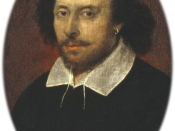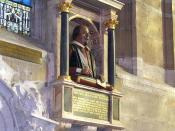In modern times, youth and beauty is an image seen everywhere. For example, a Versace billboard, magazine ad, TV commercial, all of which displays images of beautiful people. However, what happens when this beauty fades? Shakespeare in his 12th sonnet talks about his experience and fading beauty. The purpose of this poem is to encourage a young man to not lose his beauty to the ravages of time. In order to do this, one must reproduce so beauty will live. In the first quatrain, Shakespeare begins his meditation on the process of decay. He begins the poem with "I", which signals that Shakespeare will later give his own experience and account. The first object presented in this sonnet is a clock, which is to set the mood of the poem. The imagery presented by the first line is that Shakespeare is just sitting there watching the clock and counting the minutes pass by.
Although his state of mind may be idle, time does not stand still for him. As we read on, you learn that the first line is significant because it creates a bridge to the next line, "the brave day sunk in hideous night". Again, we need to place emphasis on Shakespeare's choice of wording. Shakespeare uses the word sunk in order to illustrate how the dark night engulfs the day. What Shakespeare is doing is using the words "hideous night" and "sunk" to form a catalogue of images pertaining to decay and passing time. The brave day sinks deeper and deeper as time on the clock marches on. Time is destruction. "When I behold violet past prime" (L.3), Shakespeare is again adding to his catalogue. The idea Shakespeare tries to convey is that death takes everything. The violet was once beautiful and strong but as time...


